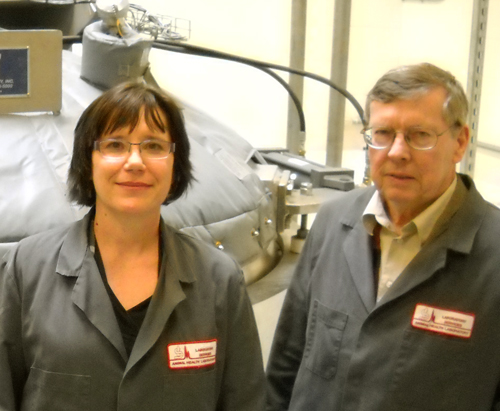
A new state-of-the-art caustic digester unit on the University of Guelph campus will ensure safe handling and disposal of animal anatomical waste, says Grant Maxie, director of the Animal Health Laboratory (AHL).
Based on chemical disposal rather than incineration, the new unit “will ensure human and environmental health and improve workers’ health and safety,” says Maxie, who is also co-executive director of U of G’s Laboratory Services Division.
The unit will begin operating this spring, after the AHL receives the requisite approval certificate from the Ontario Ministry of the Environment (MOE).
The digester is located in its own facility in the Pathobiology-AHL Building, opened in 2010 south of the main Ontario Veterinary College (OVC) complex.
Animal carcasses sent from around southwestern Ontario and from the OVC clinic are examined in the building postmortem suite to identify disease pathogens. This service helps in detecting endemic animal diseases such as pneumonia, foreign animal ailments such as foot-and-mouth disease, and zoonotic diseases that may pass from animals to humans, says Maxie.
The new unit will handle up to 5,000 pounds of material at a time. Essentially a large pressure cooker, it treats anatomical waste through heating and alkaline chemical treatment.
The process will yield non-hazardous water and solids. Water will be discharged to sanitary sewers; solids will be collected for shipment to landfills.
The alkaline digester replaces former incineration technology used at U of G for more than 50 years. The last incinerator on campus was decommissioned four years ago. Since then, anatomical waste has been dissected, placed in drums and shipped to a waste disposal site approved by the MOE and the Canadian Food Inspection Agency.
Maxie says the new self-contained unit uses no fossil fuels and produces almost no environmental emissions.
Made by an Illinois company, Guelph’s caustic digester is based on technology used for more than 20 years. Cornell University installed a similar unit two years ago. Other veterinary schools in Canada use earlier digester technology or incineration.
At Guelph, the unit will be run by three operators supervised by Maria Spinato, AHL veterinary pathologist.
Guelph’s Department of Environmental Health and Safety (EHS) has helped in research and risk assessment of digester technology and in applying for the unit’s MOE certification, says Jennifer Wesley, manager, research risk, in the Office of Research and EHS.
“It allows us to treat our bio-hazardous waste on site, which improves our containment capacity,” she says, adding that the unit will improve worker safety. “The digester will limit their handling of bio-hazardous waste as part of the disposal process.”